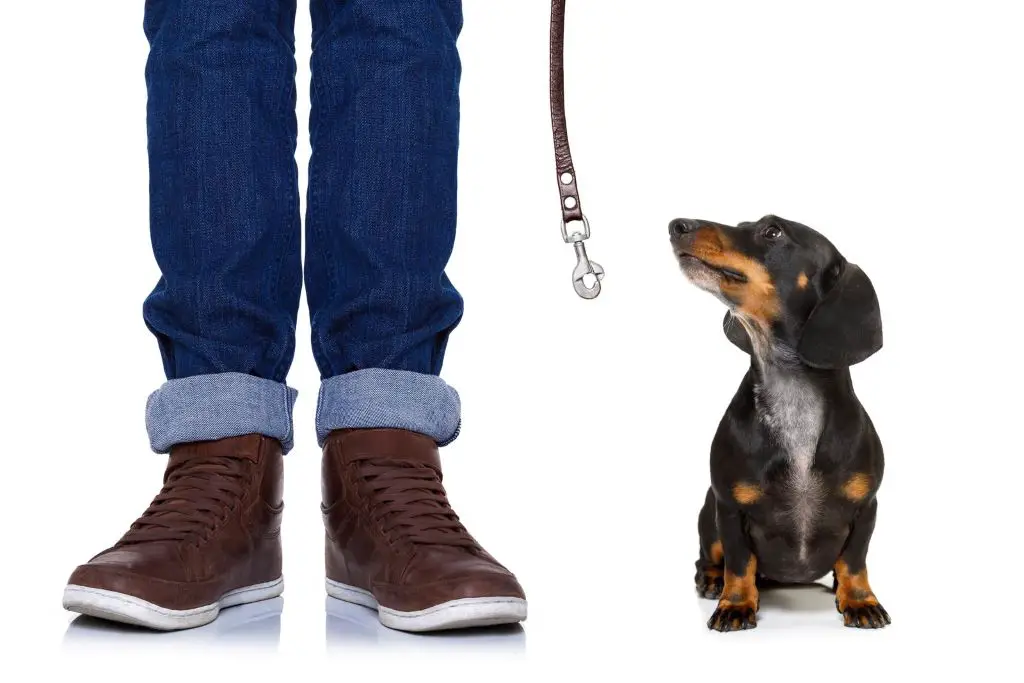Are you looking to switch dog food flavours of the same brand, but don’t know where to start? Well, look no further! This article will teach you how to change your dog’s food flavour and any risks involved.
Why should you change your dog’s diet?
There are a couple of tell-tale signs that your dog’s diet is not providing the nutrients and proteins they need.
Loose stools
The first sign of a poor diet is loose stools. If your dog has been eating the same food for months on end and their bowel movements are becoming looser and looser, it’s time to switch up their food.
The same can be said for hard stools. If your dog’s stools are becoming harder and more difficult to pass, it might be time for a change in food.
Lack of energy
A lack of energy is another sign that your dog may not be getting the nutrients they need from their diet. This can manifest itself as lethargy or decreased activity levels.
If you’re noticing any of these signs in your pet, it might be time to switch up their food and see if that helps improve their health overall!
Skin problems
Another tell-tale sign that your dog isn’t getting enough nutrients in their diet is skin problems – like eczema or dandruff.
Age
Your dog’s age also plays a role in why you should consider switching your dog’s diet. As dog’s age, their nutritional needs change. For example, senior dogs may need a diet that is higher in fiber to help with digestion and has fewer calories to prevent weight gain. On the other hand, Puppies require a diet higher in fat and protein to support their growth and development. A nutritious diet tailored to your dog’s age can help them stay healthy and happy throughout their life.

Improve Your Dachshund’s Digestive Health Today
Why is it a good idea to switch flavours within the same brand?
If your dog has been using the same food for months on end, it’s likely that their body has become used to the taste and ingredients of that food. If you switch up their diet to a different flavour, within the same brand, it’s likely that the ingredients are very similar as they usually swap out a few ingredients, such as veg or meat, to change the overall flavour of the food.
The same can’t be said for switching out food brands altogether. If you switch to a different food brand, your dog may not be used to the new ingredients and could experience some digestive problems as a result.
So, if you’re looking for ways to switch up your dog’s diet without having any major health issues arise – switching flavours within the same brand is probably your best bet!
Are there any downsides to switching to a different flavor?
There are a few potential downsides to switching your dog’s food flavour.
If your dog has previously had stomach issues or loose/hard stools on their current food, switching to a different flavour within the same brand could potentially worsen their condition. As this could be an ingredient in that brand’s food that doesn’t agree with your dog. If you do see any worsening of your dog’s condition, it might be best to switch food brands altogether and/or get an allergy test done to confirm that their food is the culprit.
Another potential downside is that some dogs may not like the new flavour as much and could start eating less or refusing to eat at all. If this happens, you’ll need to gradually introduce the new flavour over a period of time so that your dog becomes used to it.
Kibble size – This is often overlooked but when you’re switching favours of food these may differ drastically so it is important to ensure that the kibble size is appropriate for your dog.
Lastly, you need to look at the calories in the food. If you switch to a different flavour within the same brand, it could potentially increase your dog’s caloric intake as they’re now eating two types of food instead of one. So make sure that their daily calorie requirement is still being met after switching flavours!
How do you transition dog food?
When it comes to swapping food flavours for your dog, there are a few different ways to go about it but through personal experience and what has been recommended to us by vets is slow and steady.
Start by gradually switching out a small amount of the old food for the new over a period of two to four weeks.
This will help your dog become used to the new flavour and hopefully not have any negative reactions. If everything goes well, you can then slowly increase the ratio of new food to old until your dog is eating mostly or all of their new food.
It’s always important to consult with a vet before making any major dietary changes as they may be able to provide advice on how best to switch flavours within brand for your pet!
Frequently Asked Questions
Here are a couple of Frequently Asked Questions about switching dog food flavours:
Is it bad to switch back and forth between dog food?
It’s not recommended to switch back and forth between dog food brands. If your dog is happy and healthy eating their current food, it’s best to stick with that brand. However, if you do notice any negative changes such as a worsening of your dog’s health or behaviour issues, then switching back to their original food may be the best course of action.
If both of the dog food brands you’re using have similar ingredients, it may be worth trying a different brand altogether to see if that provides better results.
Is it OK to mix flavours of dog food?
There is no right or wrong answer when it comes to mixing dog food flavors, as long as both brands are safe for your pet. However, some experts recommend avoiding mixes that include two different types of meat because this can create health risks for your dog. Instead, try a mix of wet and dry food varieties or one type of meat with another type of vegetable.
Does flavour matter for dog food?
As you may already know, taste and smell go hand in hand. Dogs can smell up to 1,000 to 10,000 times better than people. So imagine what their taste is like! Having the right flavour of food that your dog loves is going to be make feeding them a lot easier.
My dog has bad diarrhea while switching – What should I do?
If your dog is experiencing diarrhea when switching their food, it is important to first determine the cause. If your dog has recently switched foods, it may be due to a food allergy or sensitivity. It is important to consult with your veterinarian to rule out any underlying medical conditions or infections before making dietary changes. You may need to switch back to the previous food.
Wrapping Things Up
Swapping dog food flavours is a great way to switch things up and provide your pet with the nutrients they need. There are a few potential downsides, such as worsening of health conditions or decreased activity levels if your dog isn’t used to the new flavour, but overall it’s an easy and affordable way to improve their diet.









